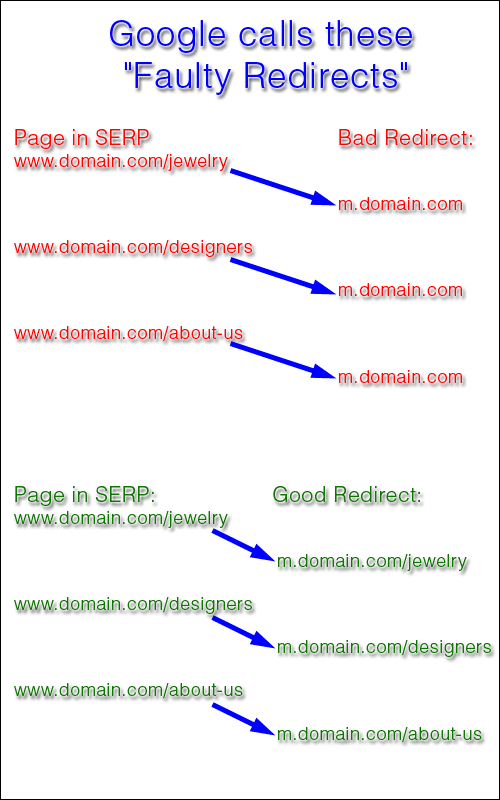
In this edition of the Daily Golden Nugget, I'll cover one of the nagging mobile website issues that Google doesn't like any more. Well, I don't know if they ever liked it, but in this video they've clearly pointed it out.
It all started a few years ago when people first started dabbling in mobile websites. It's difficult to retrofit a desktop site to include a mobile version, unless you are willing to redesign the entire site again. Setting up a parallel mobile website takes a lot of time too.
To make things easier on small business owners, a new internet industry sprang up right after the iPhone was announced. By 2010, several companies were offering easier, less expensive solutions for converting a desktop website into a mobile website.
Keep in mind that responsive website design technique also sprang into existence around the same time. If you read my previous posts here and here, you'll already know that Google is frowning on responsive designs now too. It's all part of the continuing evolution of the internet.
Here's a quick list of 7 companies that will create very fast mobile websites for you:
- Duda
- Onbile
- MoFuse
- ActiveMobi
- Mobeezo
- Tappin
- Aircus
The first one in that list, Duda, reported more than 1 million mobile websites created back in 2012. They have a wizard that makes the mobile creation process easy. It reads your desktop site and automatically creates a mobile version.
Every one of the above mobile website companies has their own way to helping to launch a mobile site quickly, but they all have the same flaw... they are not directly connected to the content on your desktop website.
While Duda does monitor your desktop site and it updates your mobile site quickly, it still lacks the page by page connection that exists in a responsive site and a parallel mobile site.
Each of the above companies provides a way for you to automatically jump mobile users from your desktop site to the home page of the mobile site. It might seem obvious to jump mobile users to the home page of your mobile website; after all, at the time of this writing, 60.9% of inbound traffic arrived on the home page.
However, Google doesn't consider that 61% of users. Google wants to satisfy 100% of users and is not willing to upset 39% of them because you have a forced redirect to a mobile home page.
Here it looks like when a mobile user is redirected to one of these stand alone mobile websites:

As you can see, if Google suggests the www.domain.com/designers page in the SERP, they expect a mobile user to visit that actual page. However, the mobile redirect script will jump the smartphone user to the home page of the mobile site.
Once Google starts enforcing their mobile friendly ranking requirement, they will penalize the websites that have this "faulty redirect" method.
The correct redirect method is to jump mobile users from www.domain.com/designers to m.domain.com/designers.
You also need a way for uses to jump back and forth between the desktop and mobile sites if they so wish. Typically, these standalone mobile sites will link back to the desktop home page as well, meaning they have a faulty redirect back again.
So here's the bottom line for those of you using one of the above 7 named mobile website services: rethink what you are doing and either move to responsive design or, my preference, responsive content. The ease of use and minimal monthly cost for these services is not worth the loss of traffic that Google is now threatening.








